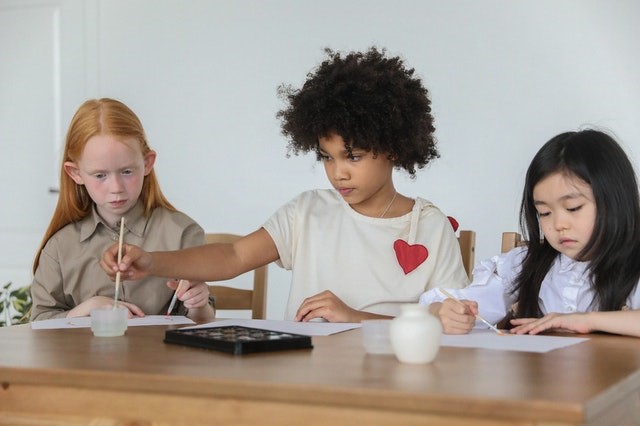Why Painting Classes for Kids are Becoming Popular?

Educators assert that art offers a multitude of benefits, including the development of fine motor skills, the ability to learn new concepts such as reading, writing, and math, and also a strategy for dealing with other disciplines such as science.
Therapists tell us that art is important because it provides children the opportunity to absorb their environment, confront difficult emotions, and acquire sensory input.
Many artists maintain that they pursue their art for reasons other than pure enjoyment. For instance, they say their work serves as a source of beauty and expression, as well as simply as a process of creation.
Children tell us that they like making art because it is fun, and they have a lot of fun doing it.
Parents claim that art keeps families involved and happy and alleviates some of the challenging day-to-day adjustments.
More than anything else, art empowers children to use their emotions in a way that is honest and meaningful. A study published in 2015 by the National Endowment for the Arts discovered that art activities help youngsters manage their emotions, which is essential for learning how to deal with feelings of frustration and rage. Kids develop self-confidence when they are able to recognize and address their feelings. They take note of their feelings, recognize them, and transform them into something visible.
Some reasons why a painting class for kid is important:
1. Art has been proven to aid in improving fine and gross motor abilities.
A painting class for kid teaches both fine and gross motor abilities, and that has long-term advantages for them. Distinct genres of art demand different tools and processes, resulting in a larger selection of tools and techniques to choose from. Utilizing and growing their little muscles is difficult for some little toddlers, especially when it comes to using and grasping items. When kids are learning how to wield paintbrushes, pencils, and markers, they are also exercising their hands and building up their muscular strength.
2. The more youngsters learn about arts and crafts, the better their vocabulary becomes.
A painting class for kid can teach children new words in a vital context. Kids will learn about diverse forms, sizes, and patterns, as well as different colors, patterns, and shades.
3. Sketching is the first step to creating a written work.
Babies and toddlers make doodles back and forth at first. However, as they keep writing, they’re more and more able to manipulate the crayon on the page.
With practice, youngsters learn to regulate their scribbling, and this opens up new avenues of shape possibilities, allowing them to form all the letters of the alphabet – even new alphabets.
4. Maintaining concentration and having endurance are important lessons for artists.
Art making is a complex process. When children become older, their artistic goals will be increasingly involved and difficult to meet. They’re sure to experience frustration and desire to give up at some point. The benefit of a painting class for kid includes developing and managing the expectations of children. When they realize that the creative process is something that takes time to master and that focusing on your specific abilities and approaches is something that happens over time, they will learn this!
5. Art helps kids build emotional connections.
Art unites people who may or may not like the same things, fostering a bond between youngsters who have never met and those who have no prior connection. Even individuals of different ages, ethnicities, abilities, and languages may join in an activity they enjoy with one other, making the activity social and universally liked.
An open mind, a few modest instruments, a little preparation, and an adventurous attitude are all important in pursuing an art-filled existence.
Conclusion
Children have several advantages when it comes to the creation of art and crafts. Art and crafts are a crucial part of children’s lives, no matter what their specific activities may be. Parents should make sure that their children have access to the arts, both within and outside of school.
We as parents and instructors have the ability to create an environment where students may try new things and develop their skills. A work atmosphere where people are encouraged to ask questions and kids are allowed to utilize the resources they need and want.








